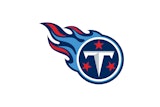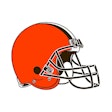The co-author of Death at the Ballpark shares his views on fan-safety issues.

Q: There has been only one known foul-ball-related fan fatality in Major League Baseball history, but do you think it's possible more fans are seriously injured at baseball games than we are led to believe? A: It's very likely. Major League Baseball claims it doesn't track injuries in any way, which I find curious, since they keep track of everything else. One of the reasons they may intentionally not keep the figures is if they kept them, and saw that it was a big problem, their liability would increase for not doing something about it. Historically, in terms of legal responsibility, baseball has gotten off fairly light with the assumption-of-risk doctrine. Fans know these accidents happen, and so it's really up to them. As long as teams have sufficient protection - i.e., screening behind home plate - and tell people, "Be careful," then they are basically taken off the hook.

Q: How often during a baseball game is fan safety jeopardized? A: I've seen estimates, and we have some in the book that came from various plaintiffs' attorneys, that there are 35 to 40 foul balls that enter the stands in any given Major League game. Most of those are going to be looping foul balls, but a good percentage of them are going to be screaming line drives.
Q: Are ballparks sufficiently designed and outfitted for safety? A: I think ballpark designers should do more. I hate to say that, because I wear trifocals and the screen behind home plate bothers me. But I think they need to run half-fencing all the way down the lines, as the Japanese do at their ballparks, just because there are so many fans who go to the game and don't pay attention. Life is risky. You can't eliminate all risk, but you can do a better job.

































